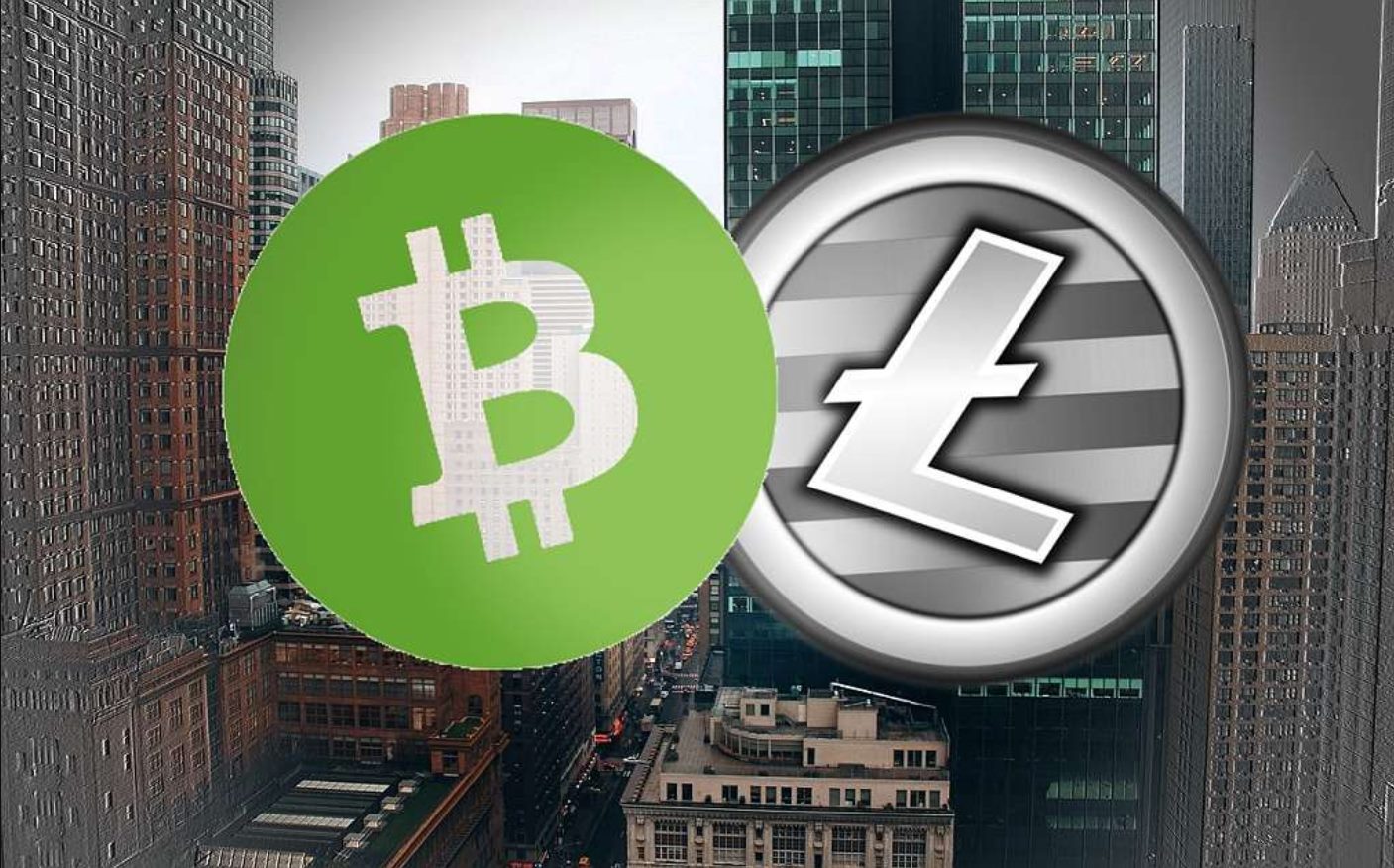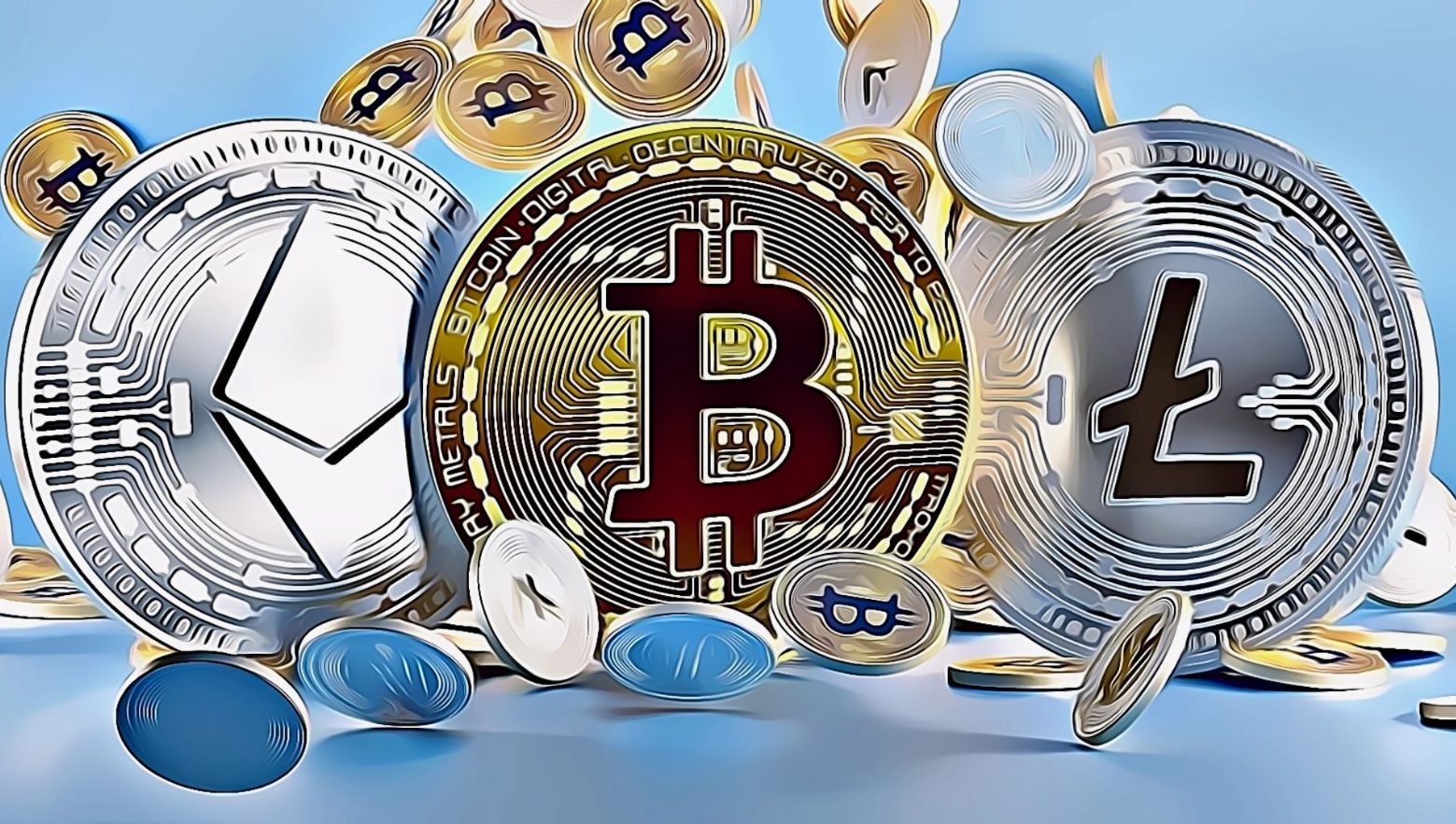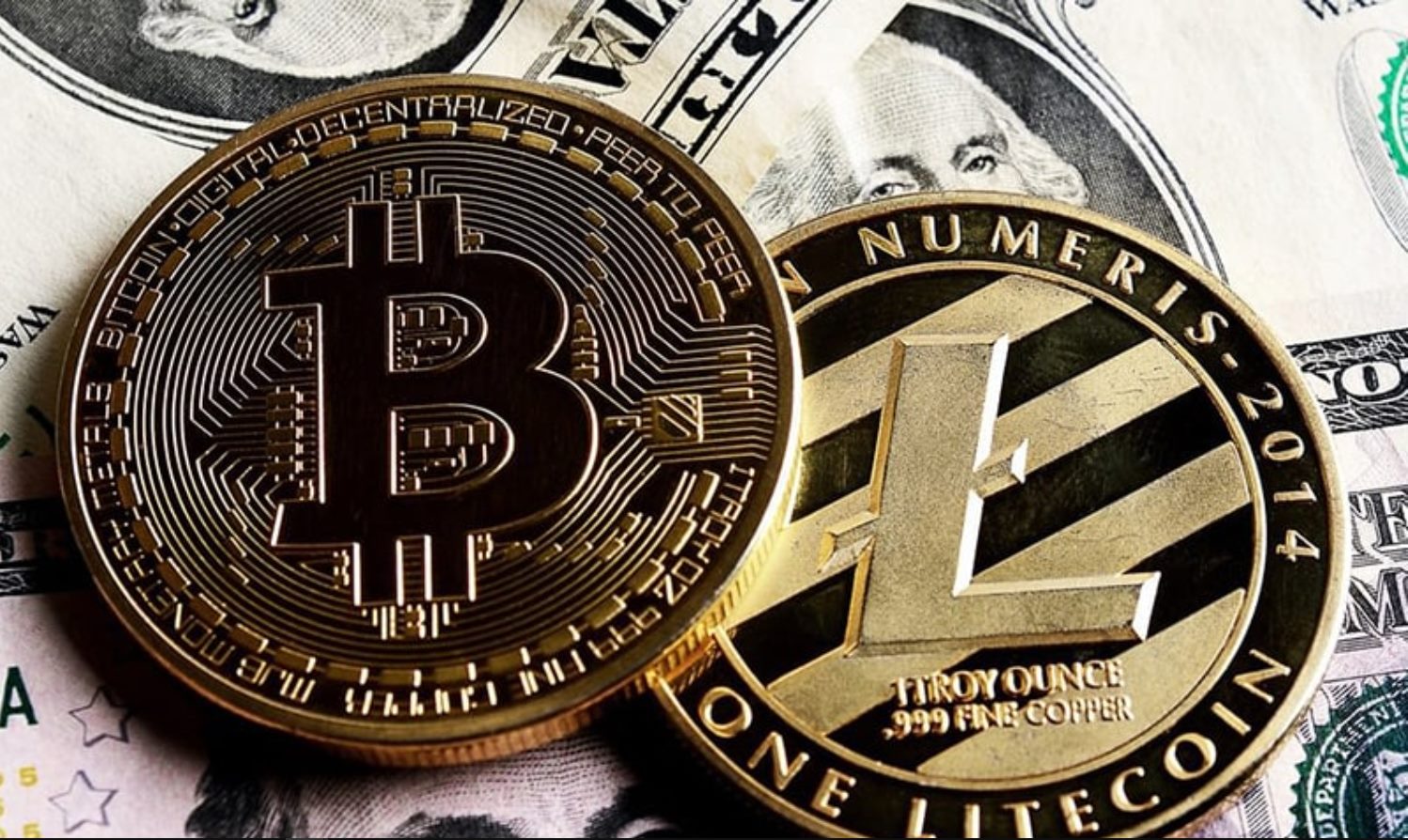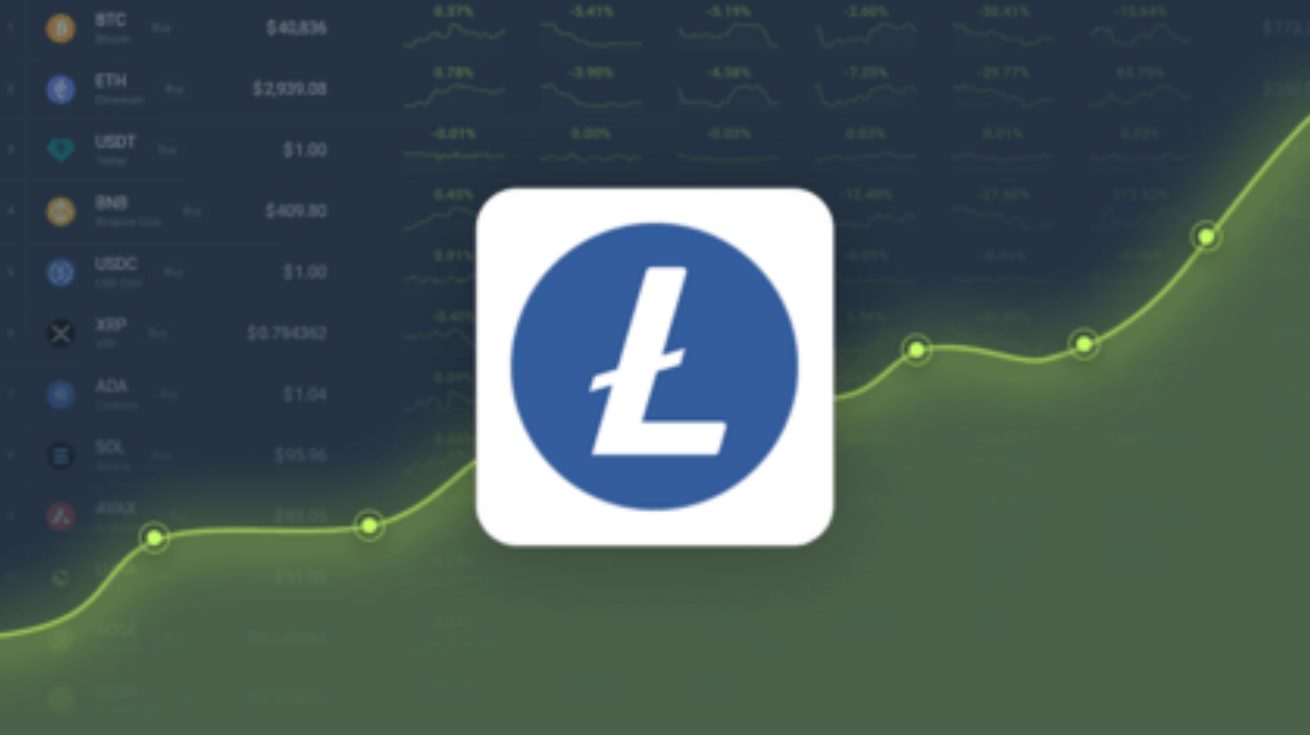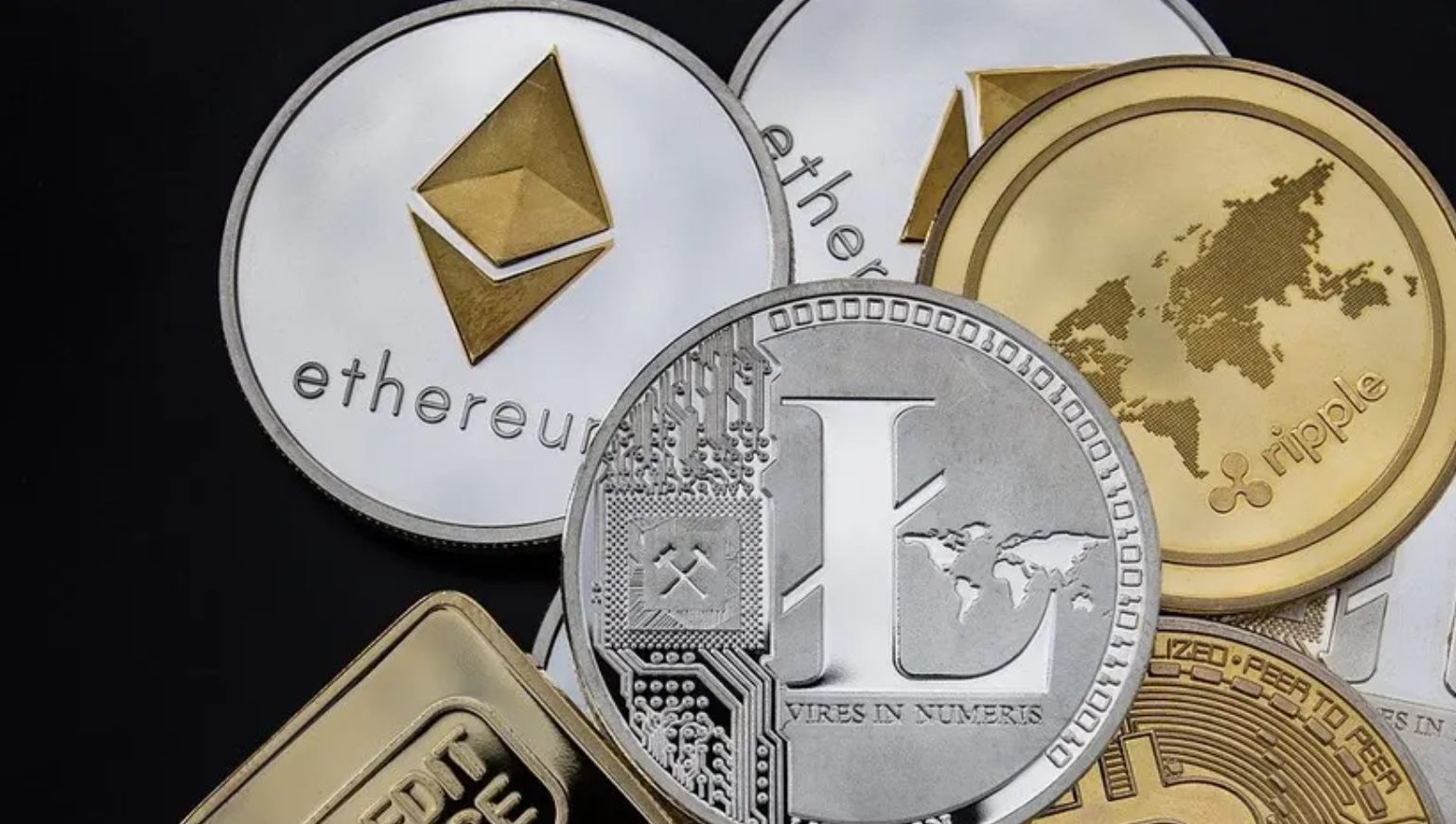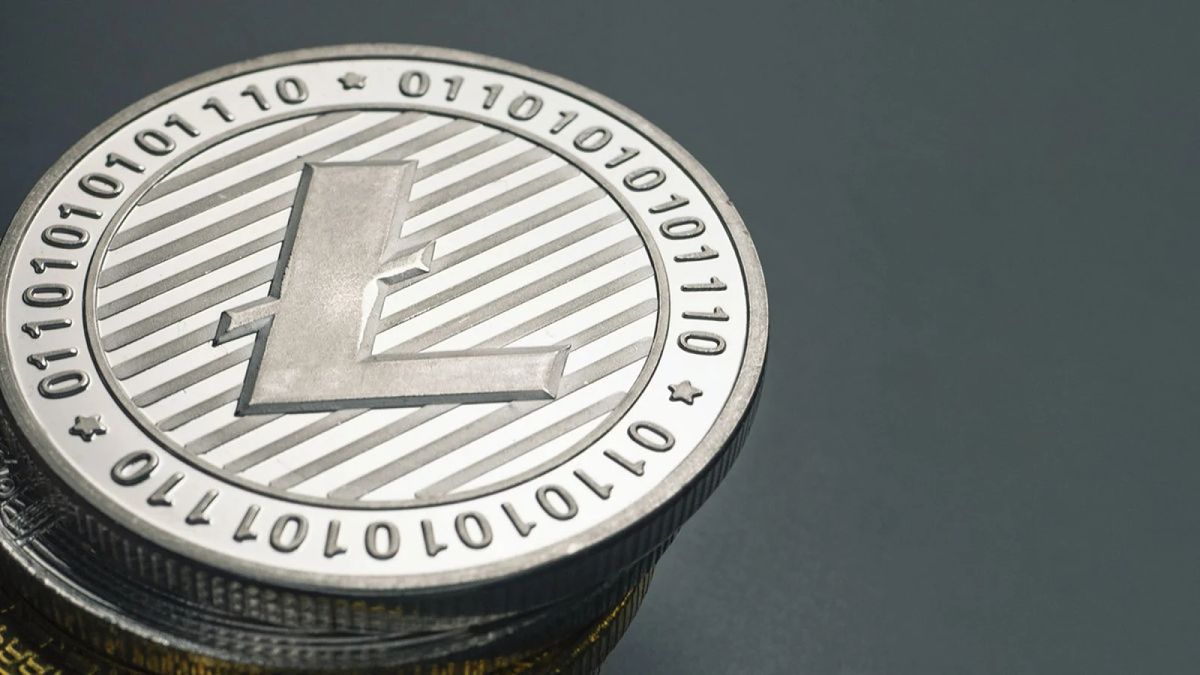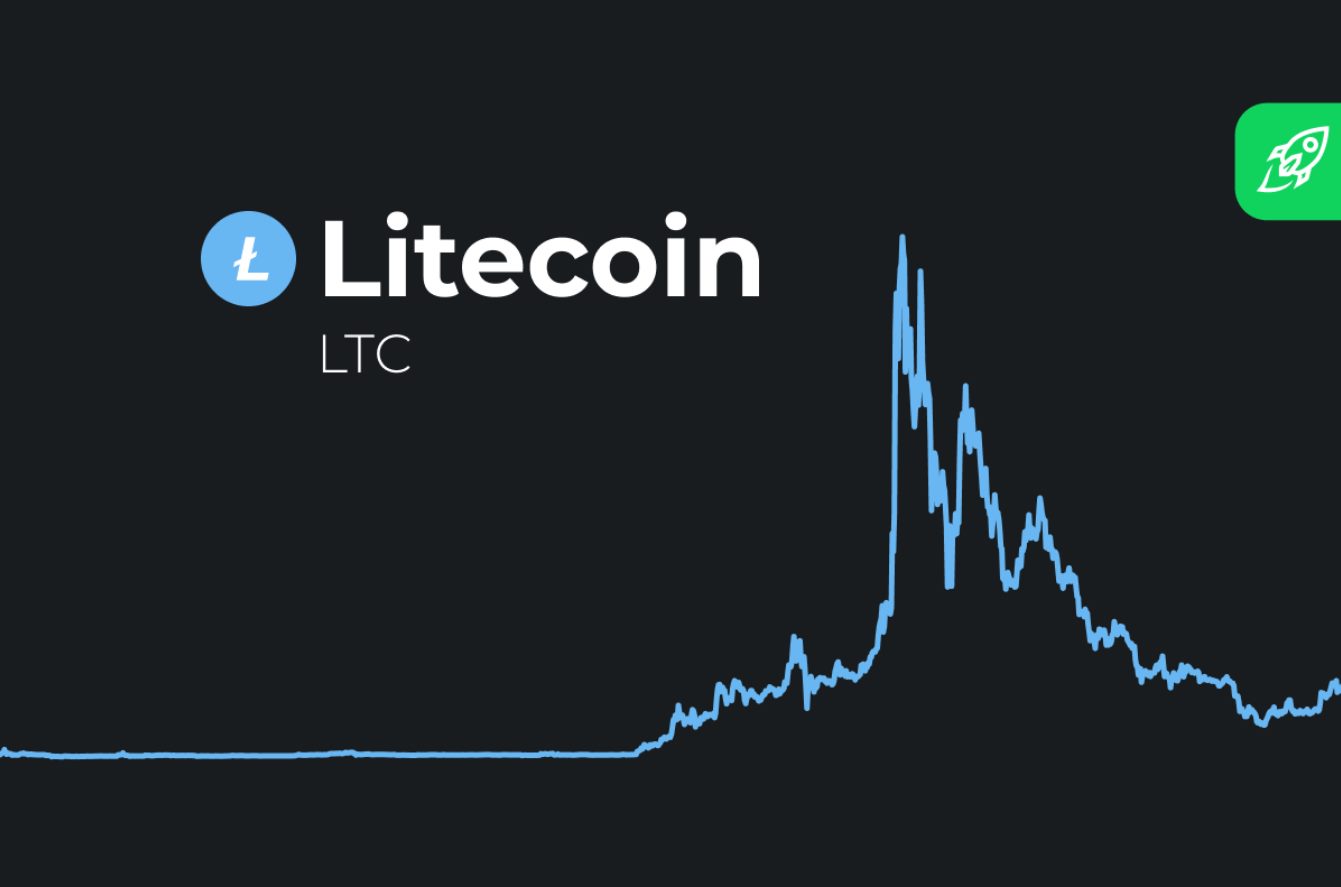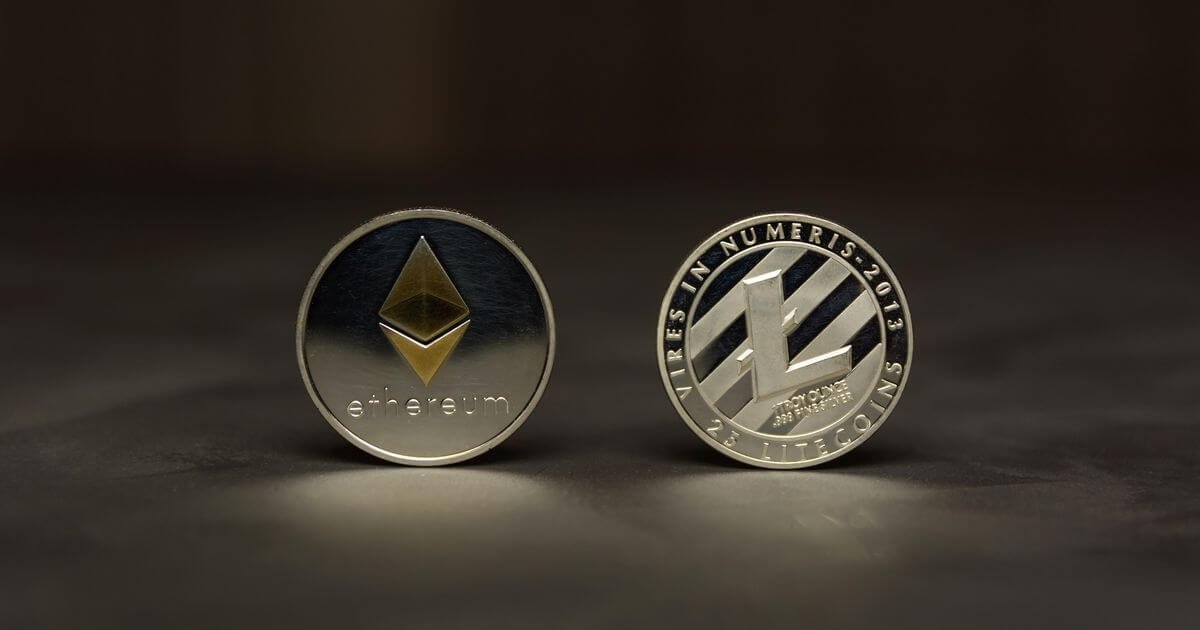Introduction
Welcome to the world of digital currencies! In recent years, cryptocurrencies have gained significant popularity and have revolutionized the way we perceive and handle money. Bitcoin, the pioneering cryptocurrency, brought about a paradigm shift in the financial landscape, offering an alternative decentralized system without the need for intermediaries.
In the wake of Bitcoin’s success, numerous altcoins emerged, seeking to enhance specific aspects of the original cryptocurrency’s ecosystem. One such altcoin is Litecoin, often referred to as “the silver to Bitcoin’s gold.” Created in 2011 by Charlie Lee, a former Google engineer, Litecoin aims to address some of the limitations of Bitcoin while sharing its core principles.
Litecoin, like Bitcoin, is built on blockchain technology, offering secure and transparent transactions. However, it also introduces distinctive features that set it apart from its predecessor. In this article, we will explore the key differences between Litecoin and Bitcoin and delve into their respective strengths and weaknesses.
It’s essential to understand that Litecoin and Bitcoin share a common foundation but have unique characteristics and functionalities within the cryptocurrency space. By understanding these differences, you can make informed decisions and navigate the ever-evolving crypto landscape with confidence.
Join us as we dive into the captivating world of Litecoin and examine its various attributes. From transaction speeds to mining algorithms, from market cap to adoption rates, we will cover all the vital aspects that differentiate Litecoin from Bitcoin. By the end of this exploration, you’ll have a comprehensive understanding of the strengths and weaknesses of both cryptocurrencies, empowering you to make informed choices in your cryptocurrency endeavors.
History of Litecoin and Bitcoin
To understand the differences between Litecoin and Bitcoin, it’s crucial to delve into their respective origins and historical development. Bitcoin, the first cryptocurrency, was introduced in 2009 by an anonymous person or group known as Satoshi Nakamoto. Its main objective was to create a decentralized digital currency that could be used for online transactions without the need for intermediaries.
Bitcoin quickly gained traction and became known as the revolutionary digital currency that disrupted traditional financial systems. However, as Bitcoin’s popularity grew, its limitations started to become evident. Transaction times were slow, scalability was an issue, and the mining process became increasingly resource-intensive.
In response to these challenges, Litecoin was introduced in 2011 by Charlie Lee. As a former Google engineer, Lee sought to address some of the shortcomings of Bitcoin while incorporating modifications that would enhance its functionality. Inspired by Bitcoin’s core principles, Litecoin aimed to be a faster, more efficient, and scalable cryptocurrency.
One of the key differentiators of Litecoin is its adoption of the Scrypt algorithm for mining, which enables quicker transaction confirmations compared to Bitcoin’s SHA-256 algorithm. Additionally, Litecoin introduced the concept of a block reward halving every four years, matching Bitcoin’s pattern. This mechanism helps maintain scarcity and control inflation in the long run.
Bitcoin, on the other hand, has experienced enormous growth and recognition over the years. It has become a household name and has gained acceptance among major companies and institutional investors. Bitcoin’s market dominance and influence in the cryptocurrency space cannot be understated.
While Litecoin has not achieved the same level of mainstream acceptance as Bitcoin, it has secured its place within the crypto community. Its unique features and dedicated user base have contributed to its growing popularity. As both cryptocurrencies continue to evolve and adapt to changing market dynamics, their histories and development paths provide valuable insights into their respective strengths and weaknesses.
In the next sections, we will further explore the specific differences between Litecoin and Bitcoin, from transaction speeds and confirmation times to mining algorithms and market volatility. By understanding these distinctions, you will be better equipped to evaluate their applications and determine which cryptocurrency aligns more closely with your needs and objectives.
Key Differences between Litecoin and Bitcoin
While Litecoin and Bitcoin share similar principles and are both built on blockchain technology, there are several key differences that set them apart. Understanding these distinctions is essential for users and investors looking to navigate the cryptocurrency landscape effectively.
One of the primary differences between Litecoin and Bitcoin lies in their transaction speed and confirmation time. Litecoin offers faster transaction confirmations compared to Bitcoin due to its shorter block generation time. While Bitcoin takes around 10 minutes to generate a new block, Litecoin produces a block every 2.5 minutes. This faster block generation allows Litecoin to handle a higher number of transactions per second, making it more suitable for daily transactions.
Another distinguishing factor is the mining algorithms used by Litecoin and Bitcoin. Bitcoin employs the SHA-256 algorithm, which relies heavily on computational power and specialized mining hardware known as ASICs. In contrast, Litecoin uses the Scrypt algorithm, which is more memory-intensive and less susceptible to ASIC dominance. This makes Litecoin mining more accessible to individual miners with standard hardware, promoting decentralization.
Block rewards and total supply also differ between Litecoin and Bitcoin. Litecoin has a total supply cap of 84 million coins, four times the supply cap of Bitcoin (21 million). Furthermore, Litecoin halves its block rewards every four years, similar to Bitcoin’s halving mechanism. This reduction in block rewards helps control inflation and ensures scarcity over time.
Market capitalization and price volatility play a significant role in differentiating Litecoin and Bitcoin. Bitcoin, with its larger user base and wider adoption, has a much higher market capitalization compared to Litecoin. As a result, Bitcoin tends to be less volatile, making it a relatively more stable investment option. Litecoin, while still significant, has a smaller market cap and can experience higher price fluctuations.
Lastly, adoption and acceptance within the cryptocurrency community and beyond are factors to consider when comparing Litecoin and Bitcoin. Bitcoin boasts greater acceptance among merchants, online platforms, and institutional investors. However, Litecoin has gained notable traction as well, with numerous merchants and online services adopting it as a payment option alongside Bitcoin.
Understanding these key differences is crucial for investors, traders, and users seeking to leverage the strengths and opportunities offered by Litecoin and Bitcoin. The next sections will dive deeper into each of these differences, providing valuable insights into the specific aspects of transaction speed, mining algorithms, block rewards, market cap, and adoption rates for both cryptocurrencies.
Comparison of Transaction Speed and Confirmation Time
Transaction speed and confirmation time are critical factors to consider when comparing cryptocurrencies like Litecoin and Bitcoin. These metrics determine how quickly transactions can be processed and confirmed on the respective blockchain networks.
Litecoin, with its faster block generation time, offers significantly quicker transaction speeds compared to Bitcoin. While Bitcoin takes approximately 10 minutes to generate a new block and confirm transactions, Litecoin completes this process in just 2.5 minutes. This means that transactions sent using Litecoin are typically confirmed four times faster than those sent using Bitcoin.
The faster block generation time of Litecoin allows for a higher number of transactions to be included in each block. This, combined with its faster confirmations, makes Litecoin more suitable for everyday transactions, where speed and efficiency are essential. Bitcoin, with its slower confirmation times, is better suited for larger transactions or situations where the utmost security is required.
It’s worth noting that transaction speed and confirmation time can vary depending on network congestion and the size of the transaction fee paid. Higher transaction fees incentivize miners to prioritize processing and confirming transactions, resulting in faster confirmations. Conversely, transactions with lower fees may experience delays during periods of high network activity.
As the demand for cryptocurrency transactions continues to increase, both Litecoin and Bitcoin have implemented solutions to address scalability challenges and improve transaction speeds. Notably, Bitcoin has introduced the Lightning Network, a second-layer protocol that facilitates faster and cheaper off-chain transactions. Similarly, Litecoin has implemented the Lightning Network, allowing for faster and more cost-efficient transactions.
In summary, while both Litecoin and Bitcoin offer secure and transparent transactions, Litecoin’s faster block generation time gives it an edge in terms of transaction speed and confirmation time. If you value quick and efficient transactions for daily use, Litecoin may be the more favorable choice. However, if you require the highest level of security and are willing to wait longer for confirmations, Bitcoin may be the better option.
Comparison of Mining Algorithms and Hashrate
Mining algorithms and hashrate play a crucial role in the operation and security of cryptocurrencies like Litecoin and Bitcoin. These factors determine how new coins are generated, the level of decentralization, and the overall network security.
Bitcoin employs the SHA-256 (Secure Hash Algorithm 256-bit) mining algorithm, which requires significant computational power and specialized hardware known as ASICs (Application-Specific Integrated Circuits). The SHA-256 algorithm is relatively simple and efficient, but it is highly resource-intensive, making it challenging for individual miners to participate in the network.
On the other hand, Litecoin utilizes the Scrypt mining algorithm. Scrypt is a memory-intensive algorithm that is resistant to ASIC dominance. This means that mining Litecoin can be performed using standard computer hardware, making it more accessible for individual miners and promoting a higher level of decentralization.
The Scrypt algorithm’s memory-intensive nature makes it less susceptible to the efficiency advantage of ASICs, which can be prohibitively expensive for many miners. As a result, Litecoin mining remains more accessible to a wider range of participants who can utilize their existing CPUs or GPUs (Graphics Processing Units) for mining, ensuring a fairer and more distributed network.
Hashrate, measured in hashes per second, is an indicator of the computational power dedicated to mining on a particular blockchain network. Bitcoin has the highest hashrate among all cryptocurrencies, thanks to its popularity and the prevalence of specialized mining hardware. This high hashrate contributes to Bitcoin’s robust network security and resistance to attacks.
While Litecoin’s hashrate is considerably lower than Bitcoin’s, it still maintains a respectable level of security due to its strong network architecture and growing community support. The decentralized nature of Litecoin mining, with its emphasis on CPU and GPU mining, helps distribute the hashrate across a broader range of participants, further enhancing network security.
It’s worth noting that the hashrate of both Litecoin and Bitcoin can fluctuate over time due to factors such as network difficulty adjustments, mining rewards, and market conditions. Additionally, advancements in technology, such as the development of more efficient ASICs or changes in mining algorithms, can impact the balance of hashrate distribution between the two cryptocurrencies.
In summary, the different mining algorithms used by Litecoin and Bitcoin, along with their corresponding hashrates, contribute to distinct characteristics. Bitcoin’s SHA-256 algorithm enables high levels of computational power and hashrate, providing robust security but limiting participation to specialized ASIC miners. Litecoin’s Scrypt algorithm promotes decentralization and accessibility to individual miners, resulting in a lower hashrate but still maintaining a dependable level of network security.
Comparison of Block Rewards and Total Supply
Block rewards and total supply are important factors to consider when evaluating the long-term sustainability and value proposition of cryptocurrencies like Litecoin and Bitcoin. These factors impact the inflation rate, scarcity, and distribution of coins within their respective ecosystems.
Bitcoin has a fixed supply cap of 21 million coins, meaning that there will only ever be a maximum of 21 million bitcoins in existence. This limited supply is achieved through a predefined issuance schedule, reducing the number of new bitcoins generated over time. As a result, Bitcoin is often regarded as a deflationary asset, with a decreasing inflation rate as the supply approaches its upper limit.
Litecoin, on the other hand, has a higher total supply cap of 84 million coins, four times that of Bitcoin. Like Bitcoin, Litecoin also follows a predefined issuance schedule that halves the block reward approximately every four years. This mechanism assists in controlling the inflation rate and ensures a gradual decrease in the rate of new Litecoin creation.
While the higher supply cap of Litecoin may initially seem disadvantageous compared to Bitcoin’s more limited supply, it does offer a few advantages. The higher supply allows for a greater number of transactions to take place, making Litecoin more suitable for small everyday transactions where lower units (such as fractions of a coin) are used.
Furthermore, the differential supply caps contribute to the overall distribution and affordability of each cryptocurrency. With a larger supply, Litecoin can be more accessible and affordable for users, as the cost of acquiring a full coin is lower than Bitcoin.
It’s important to note that the halving mechanism is the same for both Litecoin and Bitcoin, occurring approximately every four years. This reduction in block rewards helps maintain scarcity and prevents a sudden influx of new coins into circulation. This controlled issuance schedule aims to balance the needs of miners and users while ensuring a gradual and predictable increase in the value of the cryptocurrency over time.
In summary, Bitcoin has a limited supply cap of 21 million coins, creating scarcity and a deflationary nature. Litecoin, with a higher supply cap of 84 million coins, offers greater affordability and accessibility. Both cryptocurrencies implement a halving mechanism that controls the rate of new coin creation and maintains scarcity. The different approaches to block rewards and total supply allow for distinct characteristics and usage scenarios within the cryptocurrency ecosystem.
Comparison of Market Cap and Price Volatility
Market capitalization and price volatility are important considerations when comparing cryptocurrencies like Litecoin and Bitcoin. These factors provide insights into the maturity, adoption, and stability of each cryptocurrency within the broader market.
Bitcoin, being the pioneering cryptocurrency and the most widely recognized, boasts a significantly higher market capitalization compared to Litecoin. With its larger user base and wider acceptance among merchants and institutional investors, Bitcoin’s market cap reflects its dominant position in the cryptocurrency market. The higher market cap indicates greater liquidity and a more established ecosystem, attracting more attention from investors and traders.
Litecoin, while having a substantial market cap, is considerably smaller than Bitcoin’s. This difference in market cap can lead to higher price volatility for Litecoin. Smaller market caps make cryptocurrencies more susceptible to price fluctuations driven by market sentiment, news events, or speculative trading. As a result, Litecoin tends to exhibit greater price volatility compared to Bitcoin.
Price volatility can be both a risk and an opportunity for investors and traders. On one hand, higher price volatility can present opportunities for short-term gains through active trading strategies. On the other hand, it can also lead to larger price swings and increased risk for long-term holders and those seeking stability.
Bitcoin, given its broader adoption and larger market cap, tends to be relatively more stable compared to Litecoin. While Bitcoin is not immune to volatility, its higher liquidity and market depth contribute to a more stable price movement, making it a relatively safer investment option for those seeking long-term value preservation.
It’s important to note that the cryptocurrency market as a whole is known for its volatility, and price fluctuations can be influenced by a wide range of factors, including regulatory developments, technological advancements, macroeconomic events, and investor sentiment. Therefore, both Bitcoin and Litecoin are subject to market volatility, and investors should carefully consider their risk tolerance and long-term investment goals.
In summary, Bitcoin’s larger market capitalization reflects its wider adoption and more established position in the cryptocurrency market. This higher market cap contributes to its relative stability compared to Litecoin. Litecoin, with its smaller market cap, is more susceptible to price volatility. However, it’s worth noting that the entire cryptocurrency market exhibits volatility, and both Bitcoin and Litecoin can be subject to significant price swings driven by various factors.
Analysis of Adoption and Acceptance
When comparing cryptocurrencies like Litecoin and Bitcoin, an analysis of their adoption and acceptance is crucial in determining their viability and potential for future growth.
Bitcoin, being the first and most well-known cryptocurrency, has achieved widespread adoption and acceptance in various sectors. Numerous merchants, including major online retailers and service providers, now accept Bitcoin as a payment method. Additionally, established financial institutions have explored integrating Bitcoin into their operations, further solidifying its position in the mainstream financial landscape. The increasing acceptance of Bitcoin has contributed to its growing legitimacy and recognition as a viable alternative to traditional currencies.
Litecoin, while not as widely adopted as Bitcoin, has seen significant strides in terms of acceptance. Several merchants and online service providers now also accept Litecoin as a payment method alongside Bitcoin. Litecoin’s faster transaction confirmation times and lower fees make it an attractive choice for businesses looking to facilitate quick and cost-effective transactions.
Both Litecoin and Bitcoin have also seen increased interest from institutional investors. In recent years, major financial institutions and investment firms have started to offer Bitcoin investment products, such as futures contracts and exchange-traded funds (ETFs). This institutional adoption signals growing mainstream acceptance and reinforces cryptocurrencies’ position as a legitimate asset class.
Furthermore, the use of cryptocurrencies for remittances and cross-border transactions has gained momentum. Cryptocurrencies provide a more efficient and cost-effective solution compared to traditional methods, especially in regions with limited banking infrastructure. Bitcoin has emerged as a leading choice for international transactions, while Litecoin’s faster transaction speeds and lower fees make it a viable alternative for remittance purposes.
It’s important to note that regulatory environments and public perception can heavily influence adoption and acceptance. While some countries have embraced cryptocurrencies and established regulatory frameworks, others have imposed restrictions or expressed caution. The shifting regulatory landscape, along with the need for consumer protection and fraud prevention, continues to shape the level of adoption and acceptance in different regions.
In summary, both Litecoin and Bitcoin have experienced increased adoption and acceptance in various sectors, including retail, finance, and remittances. Bitcoin, with its first-mover advantage, boasts broader acceptance and recognition, marked by major companies and financial institutions. Meanwhile, Litecoin has gained traction as a faster and more cost-effective alternative, particularly for merchants and individuals seeking quick and affordable transactions. The continued growth of adoption and acceptance reflects the increasing recognition of cryptocurrencies as a legitimate and valuable form of digital currency.
Conclusion
In this exploration of Litecoin and Bitcoin, we have examined the key differences between these two prominent cryptocurrencies. Both Litecoin and Bitcoin have played pivotal roles in the development and widespread adoption of digital currencies, each offering unique features and advantages.
Litecoin, often referred to as the “silver to Bitcoin’s gold,” aims to address some of the limitations of Bitcoin while sharing its core principles. With faster transaction confirmations, a more accessible mining algorithm, and a higher total supply, Litecoin provides a different set of benefits compared to Bitcoin. These qualities make Litecoin well-suited for everyday transactions and offer potential advantages for remittances and cross-border payments.
Bitcoin, as the pioneering cryptocurrency, has achieved widespread recognition and acceptance. It boasts a higher market capitalization, larger user base, and more extensive institutional adoption. Bitcoin has become synonymous with the overall crypto market and remains a preferred choice for long-term investors seeking stability and wealth preservation.
While both Litecoin and Bitcoin share fundamental principles and utilize blockchain technology, they have distinct characteristics that cater to different use cases and preferences. The choice between Litecoin and Bitcoin ultimately depends on individual needs, investment objectives, and appetite for risk.
As the cryptocurrency landscape continues to evolve, Litecoin and Bitcoin are likely to adapt and innovate, addressing challenges and introducing new features. This ongoing development and competition within the cryptocurrency space will drive further advancements and potentially shape the future of digital currency.
It’s important for individuals and investors to stay informed and keep a pulse on the latest developments, regulatory changes, and market trends. This knowledge will empower them to make informed decisions and navigate the dynamic world of cryptocurrencies with confidence.
Whether you choose to invest in Litecoin, Bitcoin, or any other cryptocurrency, conducting thorough research, understanding the risks, and staying updated are essential steps in maximizing your potential in the ever-changing crypto landscape.
Embrace the possibilities, stay informed, and make decisions that align with your financial goals and values. The exciting world of cryptocurrencies awaits your exploration and participation.









